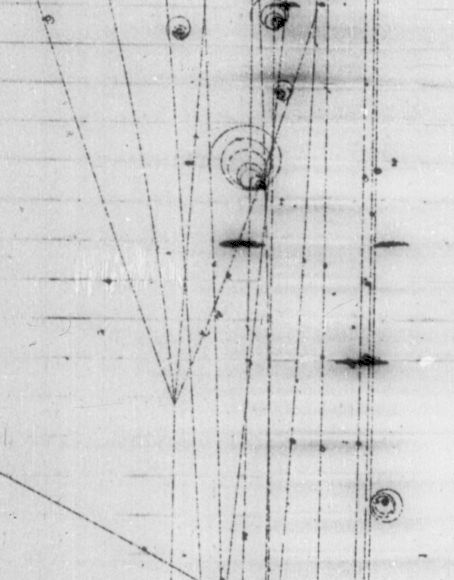
Photographs of 10 GeV bubble chamber events are studied in which strange particle creation and decay are evident. Careful measurement of vector momentum makes it possible to set upper limits on the unobservable missing tracks. Donald Glaser won the Nobel Prize in Physics in 1960 for his invention of the bubble chamber.
Specialized bubble chambers are currently used to search for hypothetical Weakly Interacting Massive Particles (WIMPs) that may be the primary constituents of Dark Matter
Although bubble chambers are no longer used in experiments at the high energy frontier at CERN and elsewhere, the the analysis principles are very similar to those used at experiments such as ATLAS: Charged particles are detected by their ionization and their momentum determined from their curvature in a magnetic field, neutral particles are detected through their interactions, and conservation laws play a key role in the analysis.
(This experiment is currently done at home by students on their own computer. Students must download Traxis code and bubble chamber pictures below. Last write-up revision: October 2020.)
Additional resources:

A portion of a bubble chamber image used in this experiment, showing the paths of many particles. The tight spirals are due to electrons.
Last updated on 20 September 2021